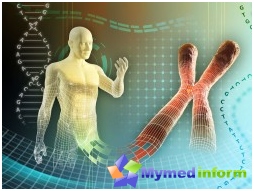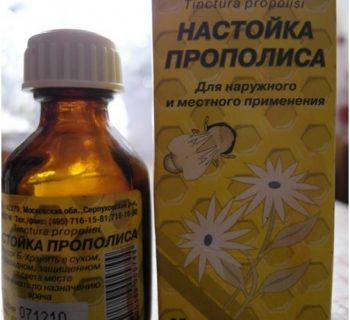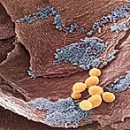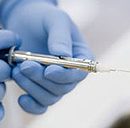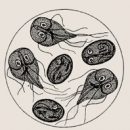At all times to the heart attack, the concerned attention of specialists was chained, due to its frequency, difficult current, serious forecast and high mortality of patients. Yes, and the people themselves who faced this disease, from the very beginning feel degraded. The heart attack develops with the catastrophic health effects, making a person disabled for a long time.
Clinical picture of the disease
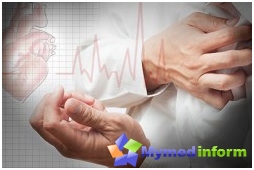
The division of the infarction on the lesion depends on Low-Quality and Melkoochagovy Forms. Based on the clinical course of the disease, 5 periods of infarction are distinguished:
- Pre-infarction period takes from several hours to one and a half months. In clinical characteristics, this stage of the disease is similar to unstable, progressive angina and acute coronary failure.
- Ostive period opens by the development of acute myocardial ischemia and ends with the formation of its necrosis. Lasts from quarter to hours to two hours. A person is experiencing a strongest pain that can spread towards left hand, blade, lower jaw, ear, teeth, a fat cavity. The greater the area of necrotic lesion, the more unevenly in the intensity of pain, which can weaken for a while, to then return with a new force. Nitroglycerin in this situation is powerless (if there is no case of an atypical infarction).
- Acute period - Final. It continues from two days to two weeks. Pain usually disappear. If it persists, it indicates the possible development of pericarditis. The large-scale infarction in the acute period typically manifest itself with heart failure and arterial hypotension.
- Subighteous period comes 4-8 weeks after the start of the disease. At this time, the scar begins to form. Patient pain no longer worried, manifestations of acute heart failure are gradually smoothed, in some cases chronic heart failure is developing. In 40% of cases, cardiac rhythm remains unstable. The heart rate comes to normal, systolic noise is no longer observed, the activity of blood enzymes is restored.
- Postinfarction period (3-6 months after the development of the heart attack) is characterized by an increase in the density of the scar. Myocardium has fully adapted to new opportunities and working conditions. With a safe recovery of deviations in the state and activity of the nervous system, practically do not manifest. However, in some cases, with an unfavorable coincidence, the risk of the development of return angina voltage is maintained, the myocardial infarction or the development of chronic heart failure may occur.
When Smallocopy infarcity The patient does not experience such severe pain as in large-scale. According to the intensity, the painful sensations are somewhat superior to the attack of angina and not so long continue. This form of the disease proceeds without the development of heart failure, but is often expressed by arrhythmias.
Diagnosis of the disease

For patients with myocardial infarction Path one - in the intensive care unit or intensive therapy unit. Treatment pursues the following goals:
- Keep pain syndrome;
- limit the area of ischemic lesion;
- restore or improve blood flow in the damaged zone of the coronary artery;
- carry out prevention or treatment of complications;
- resort to psychological or physical rehabilitation.
What you need to do before the arrival of the brigade Ambulance? The patient can take 0.5 mg (1 tablet) of nitroglycerin under the tongue, then, constantly controlling blood pressure, you need to receive 0.5 mg of nitroglycerin again every 5-10 min. In addition, 325 mg aspirin should be taken inside (to delay the tablet).
To stop pain syndrome, doctors resort to neuroleptanalgesia (combination of neuroleptic preparations and analgesics) using fentanyl (2 ml of 0, 005% solution) and drroperidol (taking into account blood pressure) from 2.5 (1 ml) to 4 mg ; Slowly intravenously (2 ml / min) 20 ml of a 5% glucose solution or sodium chloride is introduced.
Maximen as possible to limit the zone of damage to necrosis, using fibrinolytic drugs - they normalize coronary blood flow. Also to solve this problem are relevant tools for hemodynamic head unloading (group of vasodilators and a group of beta blockers).
Fibrinolytic drugs (streptocinase, urocinase) are used in the first 3 hours (but no later than 12 hours) from the beginning of the heart attack. Streptokinase introduced intravenously drip. To avoid allergic reactions, prednisone is first introduced. If allergies still occurred, glucocorticosteroids and antihistamines are used in emergency order. Treatment of fibrinolytic means is contraindicated in the presence in the history of bleeding up to 10 days, injuries and operational interventions, hemorrhagic diathesis, malignant neoplasms, Sugar diabetes. For patients with contraindications to fibrinolytic therapy, heparinotherapy becomes alternative treatment.
In continuous mode from 48 to 72 hours, nitrates are prescribed intravenously (nitroglycerin, for example) or isosorbide dinitrate (smell). Contraindications to the use of nitrates become: individual intolerance to the drug, arterial hypotension, severe sinus tachycardia.
If the patient's history is arterial hypertension, tachycardia, frequent extrasystole, experts prefer to use beta-adrenoblasts (propranolol, anaprilin, indisted). Contraindications for their use: Bradycardia, arterial hypotension, heart blockade, bronchospasm, acute left-rude deficiency.
Do not be afraid to live after a heart attack
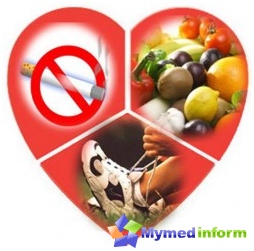
Very often transferred heart attack introduces a person to a heavy, oppressive state. Well-being leaves much to be desired, and it seems that it will always be so. However, specialists in one voice say the opposite: the heart attack is not a sentence, and the reason is seriously related to your health and start a new full life. What is needed for this, tells the MPS!
Forever to give up cigarettes. This disastrous habit increases the likelihood of a repeated heart attack by two times!
Sit on a diet. Your most important enemies are excess cholesterol and salt that increase the load on the cardiovascular system.
Do not be afraid of motion. Man after a heart attack can not once again move - delusion. Recommendation Fully abandoning physical loads receive units of victims from illness. The rest is not only possible, but also it is imperative. Walk up and down the stairs, take hiking. The load increases gradually: 5-6 weeks after a heart attack, start with a 20-minute walk a day, every day increasing its duration for 5 minutes.
Watch out weight. If you «sin» A few superfluous kilograms, be accurate and get rid of them. So you will protect yourself from a possible re-infarction. If you are not sure about success, consult the advice for a nutritionist.
Measure pressure. It is necessary to do it regularly, since the heightened blood pressure is a big risk that the heart is about that «Saw». Norm - less than 140/90 mm RT. Art. Your task: To ensure that the tonometer displays your pressure with a mark below 130/80 mm Hg. Art.
Always remember that most people who suffered myocardial infarction, have a chance to fully restore health.



